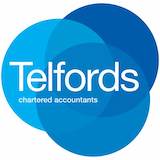
Planning
Why understanding ‘planning’ is the key to small-scale property development success
By Ritchie Clapson CEng MIStructE, co-founder of propertyCEO
A substantial slug of the Sunday Times Rich List owes their entry to property. There are stellar profits to be made, but are these profits really within the grasp of the everyday would-be property investor? Because of something known as ‘small-scale’ property development, the answer is yes.
This is not about housing estates or shopping centres. Think one step up from a flip. Many projects that constitute ‘small-scale’ involve converting a single existing building and take less work on the developer’s part to oversee than your average flip or refurb does, yet they can produce significant six-figure profits in less than 24 months, with the developer overseeing the project in their spare time.
Just like their projects, small-scale developers aren’t in the same mould as their large-scale counterparts – rather than multi-millionaire wheeler-dealer, think savvy investor. So, if you were looking for a property investment strategy and were thinking there’s not too much going for buy-to-lets at the moment, then small-scale development could be a good fit for you.
Why small-scale development?
Firstly, there are a great many empty commercial properties all over the country that are ripe for conversion into residential. We’ve got a national shortage of homes and a massive oversupply of unused brownfield sites such as shops, offices, and light industrial units. You only need to travel into your local town to see the dozens of empty commercial buildings, and the situation will worsen this year. More businesses are going to the wall, plus many owners have found the cost of maintaining their buildings increasing (energy, mortgage, maintenance, etc.) just as their value is going down, forcing them to sell. 2023 is, therefore, likely to see commercial values dip considerably, and so, for the aspiring developer, it should be a great time to buy.
A second benefit is that the government is desperate for empty brownfield sites to be converted into new homes, so much so that they’ve recently granted a whole raft of new permitted development rights (PDRs).
These PDRs allow us to change the use of a building from commercial to residential without having to apply for full planning permission. This shortcuts the process and gives developers much more certainty, since the local council has far fewer grounds on which they can object.
The clincher is that small-scale development requires far less capital investment on the developer’s part than flips or buy-to-lets. So, if you quite like the idea of making six-figure profits in the next couple of years but aren’t currently rolling in cash, small-scale development could be your perfect strategy. You will need some funds, but it will be a fraction of a typical buy-to-let or flip deposit, so you’ll get much better financial leverage. Commercial lenders and private investors are desperate to get decent returns, and many are very keen to fund good small-scale development projects, even for first-time developers.
It also involves less work than managing a flip or refurb project. That’s because you can afford to employ the services of a professional project manager to oversee things for you, something that’s usually beyond the budget of a smaller project. It’s one of the reasons that so many landlords are moving into small-scale development; it’s a lot less hands-on than managing a house refurbishment or HMO conversion.
Gaining an edge
We should start by recognising that the value of a commercial building is not fixed in the same way a residential building is. Most houses or flats have a known value, give or take a few percentage points. But a run-down shop with storage above will have one value to a retailer looking for a new home and a much higher value to a developer who can turn it into flats. This gives developers a distinct edge since they can afford to pay more for the property. But here’s where you can take things a step further. Most developers tend to stick to vanilla when converting commercial buildings, but if you know your stuff, you can extract more value from a building than your competition can. A little knowledge goes a long way in small-scale property development.
If Developer A can get five flats out of a building while targeting a 20% profit, selling the first four flats will cover the development cost, and the fifth will represent their profit. But if Developer B knows how to get six apartments out of the same building, their profit is much greater because that profit is created by the sale of two flats. This is why it’s critical to learn how to maximise the value of a building.
Why do so few developers know how to do this? For some, laziness. They’ve been making a tidy sum doing their bog-standard new build projects, so they don’t see the need to learn about that new-fangled PDR stuff. Then there are other developers who know about PDRs but fail to think outside the box. They’re unaware there are ways of being creative with PDRs to maximise their profits. In short, they don’t know enough about the game they’re playing.
Gaining invaluable information
In the same way that you might employ your accountant to help you minimise your tax bill, so a planning consultant will help you maximise your planning opportunity. They know the planning rules inside out and can show you the art of the possible. However, just like accountants, all planning consultants are not created equal. Some are more creative than others in exploiting the planning rules to the maximum without breaching them. That’s precisely the kind of consultant you want on your side, so make sure you meet several candidates and kick a few tyres before picking your favourite.
What if property development isn’t your thing?
It’s possible to make a healthy profit simply from obtaining the permitted development approval and then selling the deal on to a local developer, something known as ‘planning gain’. You won’t make as much profit, but then you’re not having to build anything. It almost becomes a desktop exercise, where you use your knowledge of what’s possible planning-wise to profit from the uplift without having to lay a single brick.
Summary
As you would expect, whether you’re developing yourself or simply sourcing projects, the key is for YOU to understand what’s possible in planning so that you don’t need to employ a planning consultant to look at every property. There’s a lot of uncertainty in the housing market at the moment, and many buy-to-let investors are licking their wounds and facing an uncertain future. But there’s never been a greater demand for new homes, and small-scale projects are an obvious alternative investment strategy. But the key to stealing a march on the competition is to know planning. It’s one area where a little knowledge really can go a long way.
ABOUT THE AUTHOR
Ritchie Clapson CEng MIStructE is an established developer, author, industry commentator, and co-founder of leading property development training company propertyCEO. To discover how you can get into property development, visit www.propertyceo.co.uk
https://www.facebook.com/propertyceotraining/




